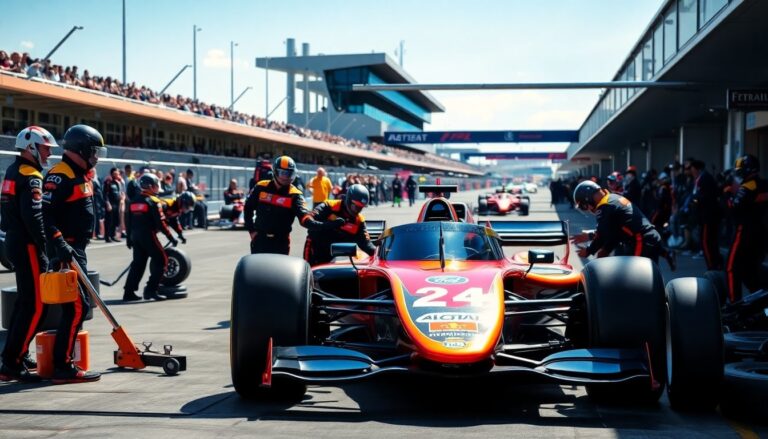Argomenti trattati
Formula 1 (F1) racing is not merely a sport; it is a global phenomenon that captivates millions of fans worldwide. With its rich history, cutting-edge technology, and exhilarating speed, F1 has significantly evolved since its inception in 1950. This article explores the thrilling world of F1, examining its history, the technological advancements that have shaped the sport, and the current state of racing.
The storied history of Formula 1
The history of F1 is a tapestry woven with tales of competition, innovation, and legendary drivers. Formula 1 began as a European sport with a limited number of races, showcasing iconic names such as Juan Manuel Fangio and Ayrton Senna. Each season, teams vie for the esteemed World Championship, challenging each other on diverse tracks across the globe.
The early years: 1950-1960s
The inaugural Formula 1 season launched in 1950, marking the beginning of a motorsport legacy. In these formative years, cars featured mechanical engines and lacked advanced safety measures. Yet, the allure of speed and fierce competition attracted a growing fan base. The 1960s ushered in an era of innovation, characterized by aerodynamic advancements and the rise of iconic teams like Ferrari and Lotus, which relentlessly pursued enhanced car performance.
Technological advancements in Formula 1
Let’s tell the truth: Formula 1 has undergone a seismic shift since the 1970s. The sport is now defined by extraordinary technological advancements that redefine engineering. Today’s F1 cars are not just vehicles; they are masterpieces of modern technology. Utilizing cutting-edge materials and innovations, these machines enhance both performance and safety on the track.
The introduction of hybrid power units is a game changer. This technology allows teams to combine traditional combustion engines with electric motors, significantly boosting efficiency. The reality is less politically correct: while some purists may mourn the loss of raw power, the integration of hybrid systems is a testament to the sport’s evolution and its commitment to sustainability.
Aerodynamics in Formula 1
Aerodynamics is essential in Formula 1 racing. Teams allocate substantial resources to wind tunnel testing and computational fluid dynamics (CFD) to refine their cars’ designs. Innovations like rear wings and diffusers have allowed teams to enhance downforce, improving grip at high speeds. This ongoing pursuit of aerodynamic excellence underscores F1’s dedication to technological advancement.
The commercial landscape of Formula 1
Formula 1 has evolved into a highly commercialized sport with a vast global following. The rise of television contracts and sponsorship agreements has reshaped F1’s financial dynamics, drawing substantial investments from major corporations. Consequently, teams such as Mercedes and Red Bull Racing have emerged as dominant forces, achieving significant success in recent seasons.
Challenges facing Formula 1
Let’s tell the truth: Formula 1 is grappling with significant challenges. Issues like sustainability and environmental impact have forced the sport to reassess its future. The introduction of more sustainable technologies and initiatives aimed at reducing carbon footprints represent a critical step toward ensuring the sport’s longevity. This shift is especially crucial as public concern for the planet continues to rise.
The future of Formula 1
The future of F1 is set to be exciting. With sustainability and innovation at the forefront, the sport is actively exploring paths such as fully electric racing. Additionally, integrating new technologies like augmented reality for fan engagement is on the agenda. The ongoing evolution of Formula 1 is likely to blend tradition with modernity, ensuring that the thrill of racing remains while addressing contemporary issues.
Formula 1 racing stands at the crossroads of sport and technology, captivating fans with its rich history and unyielding pursuit of speed. The competition features cutting-edge engineering and showcases remarkable human talent. This thrilling spectacle retains its core appeal: a showcase of human ingenuity and a relentless quest for excellence.

